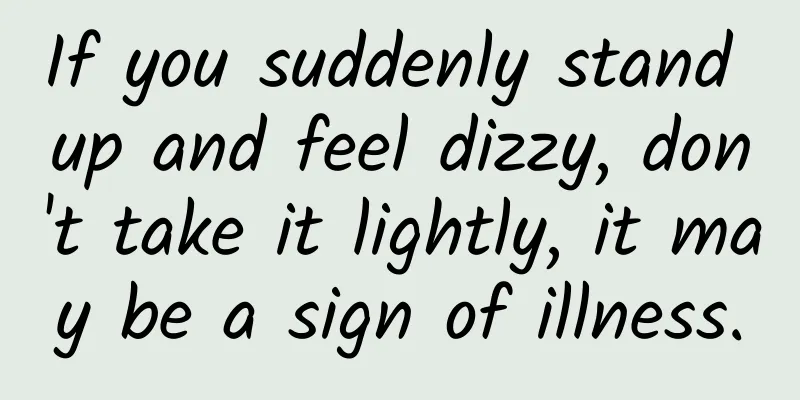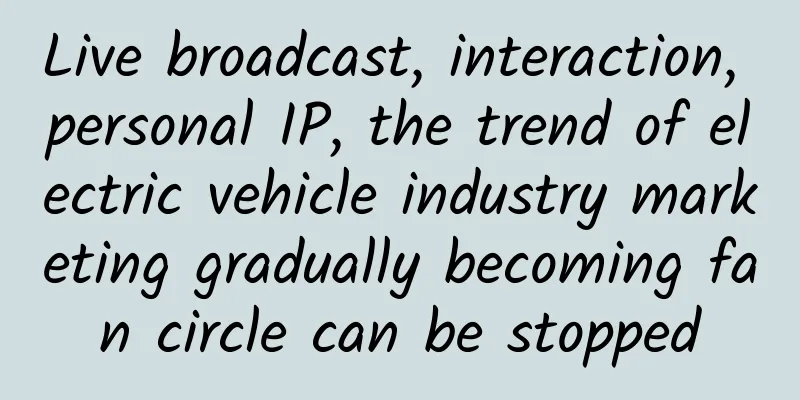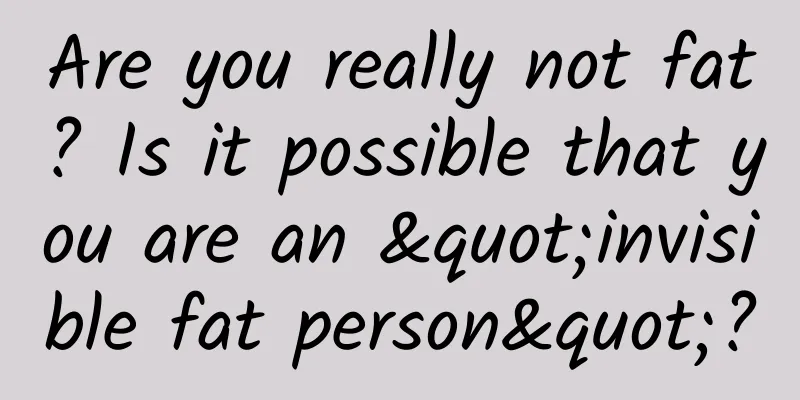If you suddenly stand up and feel dizzy, don't take it lightly, it may be a sign of illness.

|
If you stand up suddenly after squatting, you may see stars and be unable to stand steadily. Some people may even faint. This is postural hypotension . I believe many people have heard of it, and even experienced it themselves. These symptoms usually recover quickly and seem to be nothing serious, but sudden fainting may induce other dangers and even be life-threatening if not treated in time. Today we will talk about how to prevent and manage orthostatic hypotension so that it occurs less frequently or even not at all. Copyrighted stock images, reprinting and using may cause copyright disputes What is orthostatic hypotension? Orthostatic hypotension refers to the clinical phenomenon of a sudden and significant drop in blood pressure when a person stands up quickly from a lying, sitting or squatting position. Specifically, systolic blood pressure drops by at least 20 mmHg or diastolic blood pressure drops by 10 mmHg, usually within 3 minutes. When this drop in blood pressure occurs, it may cause you a series of discomfort, including dizziness, blacking out, and even temporary loss of consciousness in extreme cases. This condition is worthy of our attention not only because it will bring you sudden discomfort when you stand up, but also because it may point to other underlying health problems. In short, orthostatic hypotension is a warning that we may need to conduct a deeper examination and adjustment of certain functions of the body. Copyrighted stock images, reprinting and using may cause copyright disputes Why does orthostatic hypotension occur? The occurrence of orthostatic hypotension may confuse many people. It seems like a simple action from sitting to standing, but it can cause such a big reaction. This is mainly due to the imbalance of the cardiovascular system's autonomic nervous system regulation of body position changes. Normally, when we stand up quickly from a lying or sitting position, due to the influence of gravity, about 300 to 800 ml of blood will accumulate in the veins of the lower limbs and spleen. This process temporarily reduces venous return, resulting in a decrease in the heart's stroke volume and total cardiac output by up to 40%, ultimately causing a drop in blood pressure. In response to this change, our bodies respond through a complex series of blood pressure regulation responses. The baroreceptors in the carotid sinus and aortic arch are activated, stimulating a response in the sympathetic nervous system while inhibiting the parasympathetic nervous system to increase heart rate, venous return, cardiac contractility, and vascular tone in an effort to restore blood pressure to normal levels. Increased peripheral vascular resistance is the primary driver of blood pressure restoration, while increased heart rate assists this process. Normally these compensatory responses stabilize blood pressure within a few seconds and can maintain it within the normal range for a short period of time. From reference [1] Postural hypotension occurs when the autonomic nervous system is unable to regulate itself , but it is not always caused by a single cause. It can be divided into three categories: drug-induced, related to insufficient (total or effective) intravascular volume, and neurogenic: 1. Certain drugs (such as antihypertensive drugs, antidepressants and anti-Parkinson drugs) may cause orthostatic hypotension by impairing autonomic responses; 2. Hypovolemia may impede compensatory responses even when the autonomic nervous system is structurally normal; 3. Neurogenic postural hypotension refers to patients who meet the criteria for postural hypotension and whose autonomic nervous system function is impaired due to structural damage. These patients cannot fully increase vasoconstriction and heart rate after standing upright, thus causing postural hypotension. Diseases such as diabetes, chronic kidney disease, autoimmune diseases, endocrine disorders, increased alcohol intake, and paraneoplastic syndromes may all lead to impaired autonomic nervous system function. In addition, the risk of orthostatic hypotension increases with age and is more common in the elderly. Ageing leads to decreased sensitivity of alpha-1 adrenergic receptors, decreased heart rate responses, decreased reflex sensitivity, and an overall decline in autonomic nervous system function. These physiological changes may lead to decreased intravascular volume, decreased stroke volume, and decreased heart rate and vasoconstrictor responses to standing, thus contributing to the development of orthostatic hypotension. In summary, the occurrence of orthostatic hypotension is the result of the combined action of multiple factors and mechanisms , especially when the autonomic nervous system is improperly regulated, resulting in insufficient cardiovascular response to changes in body position. How to manage and mitigate Symptoms of orthostatic hypotension? There are many ways to effectively manage and relieve symptoms of orthostatic hypotension. From simple lifestyle adjustments to medications, there are many ways to effectively manage and relieve symptoms of orthostatic hypotension and improve your quality of life. 1 Correction of aggravating factors Certain diseases and medications may precipitate orthostatic hypotension, so when initiating management of orthostatic hypotension, attempts should be made to correct the aggravating factors first. 2 Lifestyle Adjustments Adjusting your lifestyle is the most basic and important step, involving all aspects: 1. In terms of diet: Patients are advised to increase their water and salt intake to increase blood volume and blood pressure; at the same time, they should limit diuretic and vasodilator drinks such as coffee and alcohol, and it is also necessary to limit high-sugar foods. 2. In terms of daily activities: It is recommended that patients do more lying exercises (such as stationary bicycles, rowing machines) or in the swimming pool, stand up slowly when standing up, tighten the buttocks during the process, and stand on tiptoes when standing up. 3. In terms of clothing: you can consider using elastic stockings to compress the lower limbs to reduce the amount of blood staying in the veins of the lower limbs when standing; for some patients, you may also need to use special tights to increase abdominal pressure to assist blood return. 3 Drug treatment Doctors will prescribe some medications based on the patient's specific situation, such as angiotensin-converting enzyme inhibitors or other blood pressure regulating drugs. These drugs can help adjust blood pressure and prevent a significant drop in blood pressure caused by changes in body position. Copyrighted stock images, reprinting and using may cause copyright disputes When should I seek medical help? If symptoms of postural hypotension occur frequently or cause a significant decrease in quality of life, such as frequent dizziness or fainting , these are signs that you should consult a doctor. Especially when postural hypotension is accompanied by other symptoms, such as chest pain, palpitations, or severe breathing difficulties, you should seek medical attention immediately. Patients who have been diagnosed with orthostatic hypotension should also return to their doctor if their symptoms suddenly worsen or if treatment no longer seems to be working. Regular checkups and evaluations can help adjust treatment plans to ensure optimal results. In summary, with these precautions and a clear understanding of when to seek medical help, we can better manage orthostatic hypotension and reduce its impact on daily life. And maintaining good communication with healthcare providers in the event that you feel unwell is key to ensuring your own health and safety. References [1]Magkas N, Tsioufis C, Thomopoulos C, et al. Orthostatic hypotension: From pathophysiology to clinical applications and therapeutic considerations. J Clin Hypertens (Greenwich). 2019;21(5):546-554. [2]Palma JA, Kaufmann H. Management of Orthostatic Hypotension. Continuum (Minneap Minn). 2020;26(1):154-177. Planning and production Author: Jiang Yongyuan, Master of Internal Medicine, Third Military Medical University Reviewer: Zhang Sheng, Deputy Director and Associate Chief Physician, Department of Neurology, Zhejiang Provincial People's Hospital Planning丨Zhong Yanping Editor: Zhong Yanping Proofread by Xu Lailinlin The cover image and the images in this article are from the copyright library Reprinting may lead to copyright disputes |
<<: The mosquito repellent toilet water also needs a pesticide "license"
>>: Does water have a color? Why is swimming pool water blue?
Recommend
When pandas meet bamboo: a "taste revolution" spanning a thousand years
The giant panda is China's national treasure....
Does drinking before bed really help you sleep? Don't do it anymore! The harm is more terrible than insomnia...
gossip "Drinking before bed can help you sle...
A guide to creating short video content!
Short videos are the most popular form of communi...
China Association of Automobile Manufacturers: The added value of automobile manufacturing industry increased significantly year-on-year in January-February 2021
In January and February 2021, affected by the low...
What is the relationship between the "trumpet worm" with amazing regenerative ability and humans?
When we first looked up at the starry sky, we cou...
Case! “User incentive” routine fails? See how others do it
Now that you have users, what next? In the past t...
APP Marketing Must-Read: Some Popular Advertising Formats Explained
APPs are one of the most influential innovations ...
APP promotion: building user levels from 0 to 1
A useful or interesting APP user rating system ca...
Approved without sensitive words, Toutiao and UC Toutiao frequently promote gambling apps
The agency promoted gambling apps on various plat...
Tesla may be suppressed if Trump is elected as US president
Republican candidate Trump was elected as the new...
Is drinking yogurt every day good for your health? You will never guess the answer
"Yogurt is a healthy drink. Drinking more of...
The new Yinxu Museum is open! Why was Yinxu called "Dayi Shang" by the people of the Zhou Dynasty?
The new Yinxu Museum in Anyang, Henan Province, h...
Do you think you are feeling sleepy during the spring? It may be your body's signal for help.
Spring is here, everything comes back to life Man...
Why do we fall asleep at night and wake up in the morning?
In temperate zones, or in low-latitude areas, in ...
How to optimize and quickly increase the number of app store users?
On my first day at CallApp, the CEO gave me an ex...









